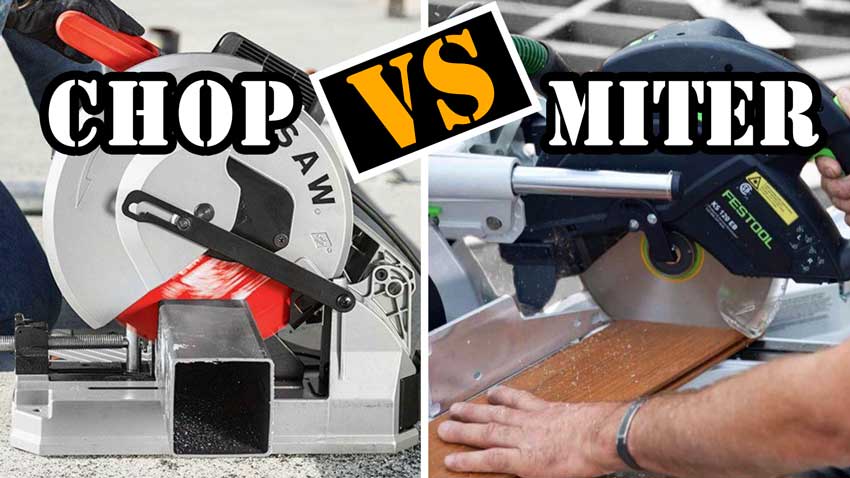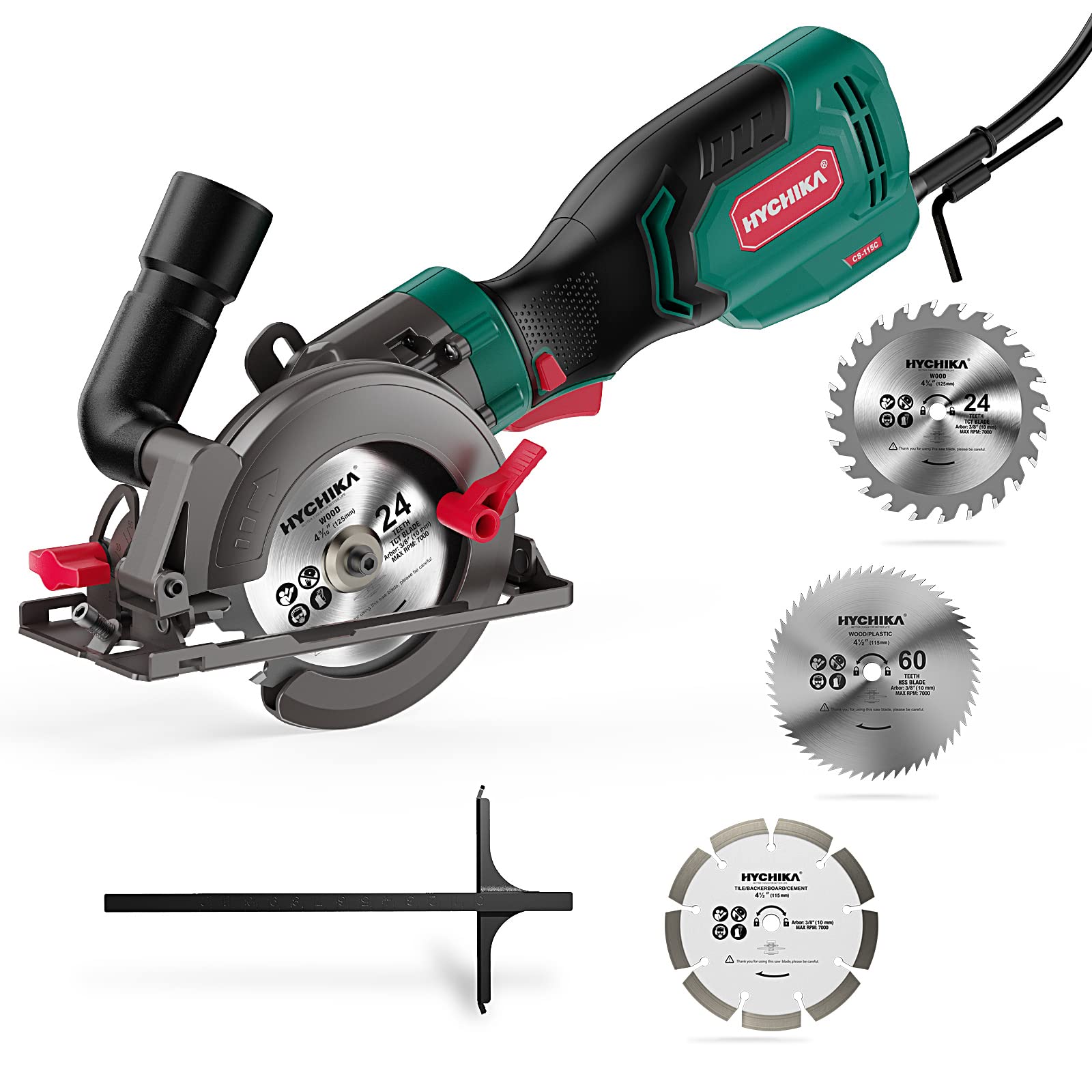A cordless circular saw for metal is designed with specific features to cut through hard materials, while one for wood is optimized for cutting through softer materials. A cordless circular saw for metal is engineered with specific features and attributes to tackle the challenges of cutting through tough and hard materials, such as steel or aluminum.
These saws typically have higher torque and speed settings, along with specialized blades designed to withstand the rigors of cutting metal. On the other hand, a cordless circular saw for wood is designed to efficiently cut through softer materials, like timber or plywood.
These saws focus on precision, providing smoother cuts and versatility for various wood types and thicknesses. While both saws serve different purposes, they offer the convenience and portability of being cordless, allowing for greater flexibility and ease of use.
Understanding The Basics Of Cordless Circular Saws
A cordless circular saw is a versatile and convenient tool for various cutting applications. Understanding the basics of cordless circular saws is essential to make an informed choice based on your specific needs. These saws, designed for both metal and wood cutting, have several key differences.
Firstly, a cordless circular saw for metal is equipped with a specialized blade that is designed to cut through metal materials efficiently. These blades are typically made of carbide or diamond-tipped, providing enhanced durability and performance. In contrast, a cordless circular saw for wood is fitted with a blade that is specifically designed for wood cutting, featuring sharp teeth for clean and precise cuts.
Another important difference lies in the power and speed requirements. Metal cutting saws generally require more power and slower speed to effectively cut through dense materials, while wood cutting saws can operate at faster speeds with less power.
Advantages of using cordless circular saws include freedom of movement without the restrictions of cords, convenient portability, and ease of use. Additionally, cordless circular saws offer versatility for various applications, making them a practical choice for both professionals and DIY enthusiasts.
Key Features Of Cordless Circular Saws For Wood
When it comes to cordless circular saws for wood, there are key features that set them apart from those designed for metal cutting. The first important distinction lies in the power and speed options available. Cordless circular saws for wood are typically equipped with a range of power settings and speed controls, allowing users to adjust the tool’s performance according to their specific cutting needs. Additionally, these saws often come with different blade types specifically designed for wood cutting. These blades feature specialized tooth configurations that are optimized for efficient and clean cuts in various types of wood. Safety is another crucial aspect, and cordless circular saws for wood incorporate safety features that are specific to wood cutting, such as blade guards, riving knives, and anti-kickback mechanisms. These features help prevent accidents and ensure smooth and safe wood cutting operations. Overall, a cordless circular saw for wood offers the versatility and functionality needed for cutting wood materials with precision and ease.
Key Features Of Cordless Circular Saws For Metal
When it comes to cordless circular saws, it’s important to understand that there are key differences between ones designed for metal cutting and ones designed for wood cutting. The key features of cordless circular saws for metal include power and speed requirements, blade composition and teeth design, and metal-specific safety features.
For metal cutting, power and speed requirements are higher compared to wood cutting. Metal cutting requires more torque and often higher RPMs to efficiently cut through the tougher material. This means that cordless circular saws for metal are usually equipped with more powerful motors and higher-speed settings.
The blade composition and teeth design are also different for metal cutting. Blades designed for metal are made from special alloys or carbide-tipped to withstand the hardness of metal. The teeth are formulated to have a more aggressive cutting angle to remove material effectively.
Lastly, cordless circular saws for metal often have metal-specific safety features. These features may include blade guards to prevent accidental contact, anti-kickback mechanisms, and stable baseplates to ensure accurate cuts.
Differences Between Cordless Circular Saws For Wood And Metal
Differences Between Cordless Circular Saws for Wood and Metal
When comparing cordless circular saws for wood and metal, one of the main differences lies in their power and speed capabilities. Cordless saws designed for wood are typically equipped with high-efficiency motors and optimized gear systems, allowing them to generate high torque and deliver rapid blade speeds. These features enable efficient cutting through dense and thick wood materials.
On the other hand, cordless circular saws for metal are engineered with different power and speed specifications to suit the specific requirements of cutting through various metal materials. They are designed to exert greater force and have slower blade speeds which are ideal for cutting through hard metals without causing excess heat or damaging the material.
Another notable distinction between cordless circular saws for wood and metal is the type of blades used and the materials they are made of. Wood cutting blades typically have larger teeth with deeper gullets to facilitate efficient chip removal while cutting through thick wooden surfaces.
On the contrary, metal cutting blades for cordless circular saws are constructed with carbide or other durable materials that can withstand the wear and tear associated with cutting through various metal alloys. These blades have smaller teeth with shallow gullets, allowing for smoother and more precise metal cutting.
Considering safety, using the appropriate cordless circular saw for the intended material is crucial. Wood and metal have different properties and cutting requirements, so using the wrong tool can lead to potential hazards or damage to the material and equipment. It is important to always follow the manufacturer’s instructions and guidelines for safe operation, proper blade selection, and wearing appropriate personal protective equipment (PPE) to ensure a safe and successful cutting experience.
Power And Speed Considerations
When considering the difference between a cordless circular saw for metal and one for wood, power and speed are crucial factors to take into account. For wood cutting, having sufficient power is important to ensure efficient and clean cuts. Wood is a relatively soft material compared to metal, so a higher power output is required to cut through it smoothly. Additionally, the speed of the saw plays a significant role in wood cutting. A faster blade speed allows for quicker and more precise cuts, resulting in smoother edges and reduced splintering.
On the other hand, when it comes to metal cutting, power and speed requirements vary. Metal is a more demanding material, requiring greater force and speed for effective cutting. To make clean cuts through metal, a cordless circular saw needs a higher power output and a slower blade speed. The power provides the necessary force to cut through the metal, and a slower blade speed helps prevent overheating and minimizes friction, reducing the risk of damaging the material or producing rough cuts.

Credit: www.protoolreviews.com
Blade Types And Materials
When it comes to cordless circular saws, understanding the difference between blades designed for metal and wood cutting is crucial. The primary distinction lies in the composition and tooth design of the blades.
| Wood Cutting Blades |
|---|
|
Wood cutting blades are specifically designed to efficiently cut through various types of wood. These blades typically have a high tooth count, ranging from 24 to 80 teeth per blade, enabling them to make clean cuts with minimal tear-out. The blade material for wood cutting saws is usually made of high carbon steel or carbide tipped for enhanced durability and precision. Carbide tipped blades are particularly effective for cutting hardwoods, while blades made of high carbon steel are more suitable for softwoods. |
For metal cutting, circular saw blades employ a different approach. These blades are engineered to cut through various metal materials, including aluminum, steel, and copper.
| Metal Cutting Blades |
|---|
|
Unlike wood cutting blades, metal cutting blades have a lower tooth count, typically ranging from 16 to 80 teeth. This is because metal cutting requires a more aggressive tooth design to handle the tougher material. Blades for cutting metal are constructed with specialized materials like high-speed steel (HSS) or carbide-tipped blades. HSS blades are ideal for cutting softer metals, while carbide-tipped blades are better suited for harder metals like stainless steel. |
Understanding the differences in blade composition and tooth design between cordless circular saw blades for wood and metal enables you to make the right choice for your specific cutting needs.
Safety Considerations
When choosing a cordless circular saw, it is important to consider the specific safety features for wood and metal cutting. For wood cutting, safety features such as a blade guard, a riving knife, and an automatic brake are commonly found. These features protect against kickbacks, minimize the risk of injury, and stop the blade quickly after releasing the trigger. Additionally, some models may include a laser guide to improve cutting accuracy.
On the other hand, when it comes to metal cutting, cordless circular saws require unique safety features. The blades are made from specialized materials, such as carbide-tipped or cermet, to handle the density and hardness of metal. The saw may also have a built-in chip collector or a spark deflector to prevent metal fragments and sparks from causing potential hazards. Some models may feature an adjustable blade guard specific to metal cutting, providing additional protection.
Overall, it is vital to choose a cordless circular saw that offers the appropriate safety features for the intended material, be it wood or metal. Whether it’s the blade guard, automatic brake, or specialized blades, these features ensure a safer and more efficient cutting experience.
Frequently Asked Questions Of How Does A Cordless Circular Saw For Metal Differ From One For Wood?
How Does A Cordless Circular Saw For Metal Differ From One For Wood?
Cordless circular saws for metal are equipped with specific cutting blades and higher RPMs to effortlessly cut through metal materials. They often have features like adjustable speed control and spark deflectors for added safety. On the other hand, cordless circular saws for wood have blades designed for cutting through wood fibers efficiently, with adjustable depth settings and bevel capacity for versatile cuts.
Conclusion
To conclude, understanding the differences between cordless circular saws designed for metal and wood is crucial for achieving optimal results in your projects. While both saws serve the same purpose, having a saw specifically designed for metal cutting ensures greater precision and durability.
With the right tool in hand, you can effortlessly tackle any cutting task, whether in wood or metal, and achieve professional-level results. Choose wisely and let your projects shine.

